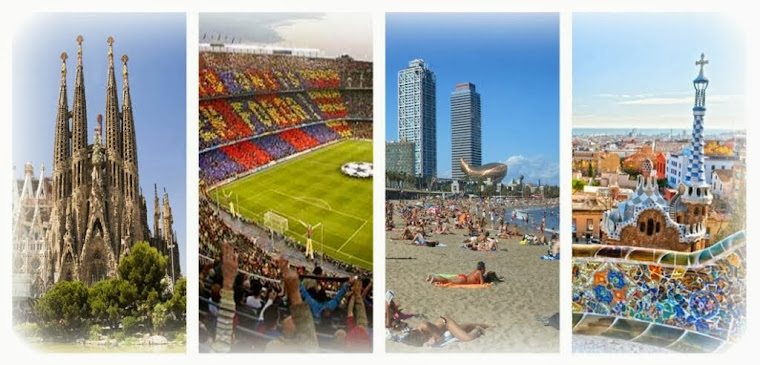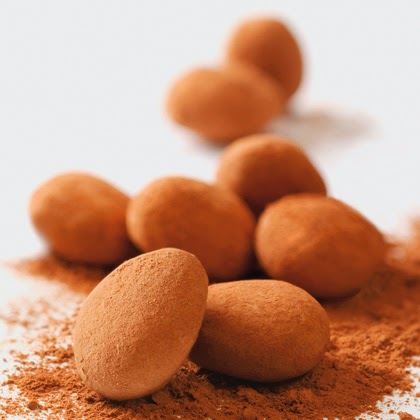We all love a laid-back Sunday but if you’ve only got a few days in Barcelona, you want to make the most of your time. The trouble is that many locals here will be enjoying a relaxing day themselves, meaning that many doors across the city are firmly shut.
The good news is that Barcelona isn’t completely closed, and if you plan ahead, there are loads of options to make the most of your day.
Beast of a brunch
If you’re going to make the most of your Sunday, you need to get off to a good start. The popular ‘Recovery Menu’ at Milk is a great choice and aptly named for that Sunday morning hangover cure. Their menu offers all sorts of tasty breakfast treats, from pancakes, cereals and Greek yoghurt to eggs benedict and a full-on fry up.
 |
| Your not-so-lazy Sunday in Barcelona |
Tour the city
Bornbike Barcelona offers a range of different bike tours including a Gothic to Modernisme tour, beach tour, tapas tour (yes, that’s right, tapas by bike!) and a cycle around the hilly Montjuïc. Or you can request a tailor-made tour to suit your interests (and fitness levels!).
If you don’t fancy biking it, walking around Barcelona will take up a nice-sized chunk of your Sunday. Head to Plaça Catalunya, the Cathedral, Gothic Quarter, Montjüic, the Olympic Stadium and el Poble Espanyol.
If you really are determined to embrace the laziness of Sunday, you can do your sightseeing on a bus. Barcelona City Tour has two routes which stop at all the most exciting points of the city and run all day long, allowing you to hop on and off where and when you please.
 |
| Your not-so-lazy Sunday in Barcelona |
Get your Gaudí on
Luckily for art and architecture fans, all of Gaudí’s sites are open on a Sunday. Wander around Park Güell at your leisure, gape in awe at the Sagrada Familia and explore the fascinating rooms at Casa Batlló.
Museums
The city’s museums definitely don’t close their doors on a Sunday. Do check opening times, though, as some close earlier than usual (around 3pm is the norm).
If you’re lucky enough to be in the city on the first Sunday of the month, take full advantage of free museums day and hit up a few before they close mid-afternoon.
 |
| Your not-so-lazy Sunday in Barcelona |
Visit Camp Nou with its football museum, Barcelona Centre of Contemporary Culture (CCCB) to see a range of different art exhibitions, the charming Picasso Museum, the Cosmo Caixa science museum or maybe even the surprisingly informative Chocolate Museum.
Take a stroll
There’s nothing like a good stroll on a Sunday to walk off that big lunch you’ve just enjoyed. Take your time wandering around the gardens of Montjuïc or jump on the funicular train up to Tibidabo for amazing views over Barcelona. Alternatively, you could rent a bike and go exploring. There are always interesting activities in Barcelona and Sunday may be a good day to try something a little different. There are tons of groups that organise walks, fun classes and other activites that are often free or very cheap and it gives you a chance to meet the locals and see another side to the city.
Bask on the beach
Barcelona has a great offering of beaches and Sunday is a great day to kick back, relax and enjoy a good book with a view of the city’s coastline. Barceloneta is where it’s happening with all the beach bars and restaurants that line the beach walk but if you want something more tranquil, head up a bit further to Nova Mar Bella.
Catch some Catalan culture
 |
| Your not-so-lazy Sunday in Barcelona |
Sardana by ZypresseIf you find yourself in the Gothic Quarter around midday, look out for the locals dancing the traditional Catalan Sardana dance outside the cathedral. There’s a joyful atmosphere with music and laughter – don’t be shy to join in!
In Plaça de Sant Josep you’ll find a small art market where Catalan artists of varying styles set up their easels under the shadow of the church. If you like art, or just fancy browsing, it’s a pleasant spot.
If a hearty paella is the order of the day, the best places can be found along Barcelona’s sea front promenade and the popular-with-locals Passeig de Joan de Borbo, faces the old port. Many restaurants here will tout for business but follow the crowds and sound of Catalan chatter and you won’t go far wrong.
Carry on the party
If you’re here to party, why stop for Sunday? Row 14, a club just outside of Barcelona, has summer parties every Sunday which start in the afternoon and continue well into the night. You can get there easily on a bus provided by the club which leaves from Plaça Catalunya.
So, as you can see, there is no excuse to wasting your Sunday away in Barcelona. If you want to take it easy, sure you can but if you are raring to go…GO!






































